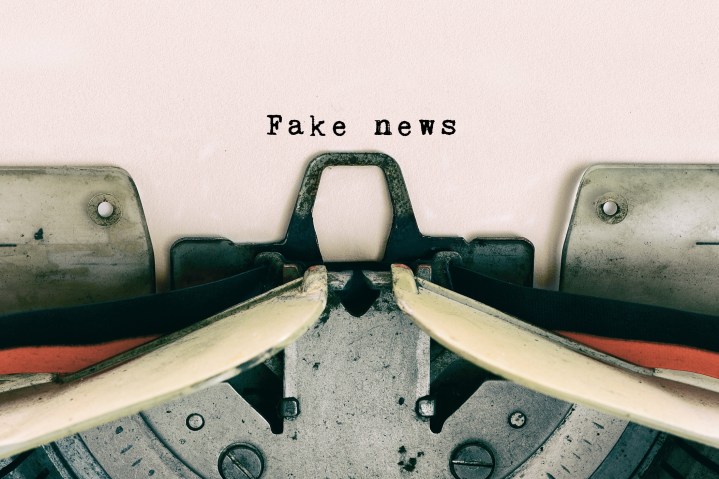In response to a wave of spurious news stories, a publication called the Fourth Estate summarized the general mood of American society: “The public is becoming heartily sick of fake news and fake extras. Some of the newspapers in this town have printed so many lying dispatches that people are beginning to mistrust any statement they make.”
That was 1898, yet it captures the attitude of 2018 as well.
“Fake news” is the phrase on everyone’s lips and every publication’s front page, as people all over the media world try to understand the fake news epidemic. How can readers tell whether an article is honest or not? Here’s how to spot fake news.
Read more than the headline!
Sensationalism starts with the headline, and that’s unfortunate — most people only ever read the headline. A mere “4 in 10 Americans report that they delved deeper into a particular news subject beyond the headlines,” according to the American Press Institute. That tendency to stop at the headline is especially troublesome in an age where social media dominates conversations. A study last year by computer scientists at Columbia University and the French National Institute showed that, of the many stories shared on social media, 59 percent of them didn’t receive clicks, meaning people were sharing them based solely on the headline, not the content within!
Headlines are an important part of journalism — without a captivating headline, people are less likely to read an article, which is the whole point of writing it, after all — but they rarely contain all the important information. No matter the source of an article, whether it be The New York Times or some blog run out of a basement, you should never stop at the headline.
Consider the source
Not all publications are equal in journalistic rigor. Optimists point to the internet’s value as a medium for sharing information, where anyone, anywhere with a connection can broadcast their thoughts, or access those of others. That freedom comes with a lack of quality control, and not everyone broadcasting info on the internet is well-informed, or even honest.
When reading any news story, consider the source before believing or sharing it. Even if you disagree with the opinion pieces in newspapers like the Wall Street Journal or Washington Post, their editorial processes are rigorous, as are their ethics guidelines. Online, you should also take note of the site’s URL. Fake news sites will often have strange URLs, such as the infamous “abcnews.com.co,” a website that went so far as to emulate ABC’s logo.
Check the article’s sources
Any good news piece should involve quotes from people involved, or else experts who can provide informed opinions on the topic. If a site publishes a story about a new tax that Congress is debating, one would expect the reporter to cite Senators and Representatives arguing for or against it, or economists who can explain the ramifications of said tax.
When reading a news story, pay attention to quotes the writer uses. Have they even cited any sources? If so, who? Do a quick search online and see if you can find any information about the people quoted in the story. Even if the article does cite sources, don’t think the link itself is sufficient evidence. Follow the link to make sure it says what the article claims it does. Dishonest writers may include links that go nowhere — an “attribution goose chase,” as Reveal puts it.
Don’t succumb to satire
In the age of Twitter, everyone’s a comedian — or at least considers themselves one. Unfortunately, this can lead to confusion. Many satirical sites today bear names that sound legitimate, and the stories themselves might hew a little too close to reality for people to realize they are satire. If a story seems too weird to be true, check to see if the site has a satire disclaimer.
Take tweets (and social media posts in general) with a grain of salt
“Rumor flies,” Virgil once wrote, and that was back when it could take weeks for a messenger to travel. In the age of social media, news travels more quickly still, and people often feel an impulse to break news over mediums like Twitter, even if the story is unconfirmed (to say nothing of people intentionally spreading lies to suit an agenda). Social networks are taking steps to curtail the spread of fake news, but if you see something outrageous on social media, don’t just share it; check it out first.



